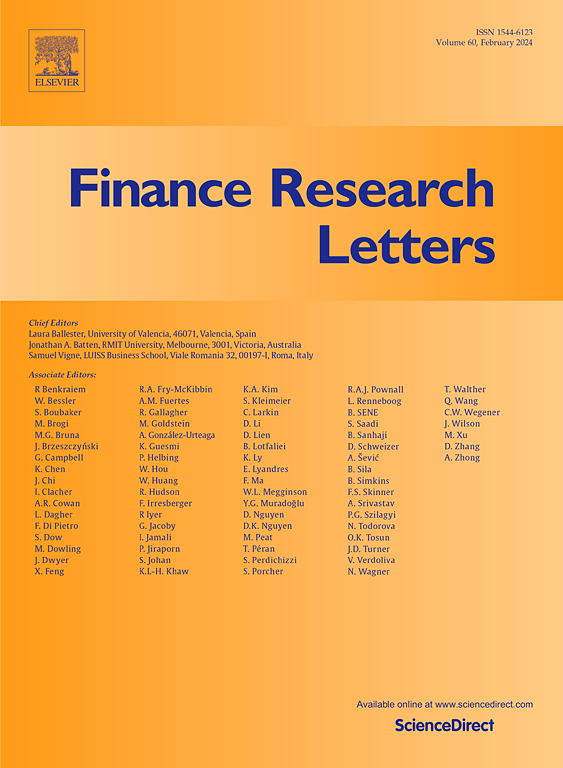银行的政府债务组合与主权风险:从避风港到惊涛骇浪
IF 7.4
2区 经济学
Q1 BUSINESS, FINANCE
引用次数: 0
摘要
我们运用面板回归和量阶分析方法,分析了 31 个国家的国内银行、外国银行和中央银行在 1989-2022 年期间的公债持有量。我们的结论是,与 2010 年之前的观察结果相反,我们发现 2010 年之后,主权风险的增加会提高国内银行公债投资组合的份额,降低中央银行的持有比例。更好的主权配比也会增加(减少)商业银行(中央银行)的持有份额。此外,自 2010 年金融危机以来,国内投资者面临的风险增加的影响也有所增大。本文章由计算机程序翻译,如有差异,请以英文原文为准。
Banks’ portfolio of government debt and sovereign risk: From safe havens to stormy seas
We analyse domestic, foreign, and central banks holdings of public debt for 31 countries for the period of 1989–2022, applying panel regressions and quantile analysis. We conclude that contrarily to what we observe before 2010, we found that after 2010 an increase in sovereign risk raises the share of domestic banks’ portfolio of public debt and reduces the percentage holdings in the case of central banks. Better sovereign rations also increase (decrease) the share of commercial (central) banks holdings. Furthermore, the effects of an increment in the risk for domestic investors have increased since the 2010 financial crisis.1
求助全文
通过发布文献求助,成功后即可免费获取论文全文。
去求助
来源期刊

Finance Research Letters
BUSINESS, FINANCE-
CiteScore
11.10
自引率
14.40%
发文量
863
期刊介绍:
Finance Research Letters welcomes submissions across all areas of finance, aiming for rapid publication of significant new findings. The journal particularly encourages papers that provide insight into the replicability of established results, examine the cross-national applicability of previous findings, challenge existing methodologies, or demonstrate methodological contingencies.
Papers are invited in the following areas:
Actuarial studies
Alternative investments
Asset Pricing
Bankruptcy and liquidation
Banks and other Depository Institutions
Behavioral and experimental finance
Bibliometric and Scientometric studies of finance
Capital budgeting and corporate investment
Capital markets and accounting
Capital structure and payout policy
Commodities
Contagion, crises and interdependence
Corporate governance
Credit and fixed income markets and instruments
Derivatives
Emerging markets
Energy Finance and Energy Markets
Financial Econometrics
Financial History
Financial intermediation and money markets
Financial markets and marketplaces
Financial Mathematics and Econophysics
Financial Regulation and Law
Forecasting
Frontier market studies
International Finance
Market efficiency, event studies
Mergers, acquisitions and the market for corporate control
Micro Finance Institutions
Microstructure
Non-bank Financial Institutions
Personal Finance
Portfolio choice and investing
Real estate finance and investing
Risk
SME, Family and Entrepreneurial Finance
 求助内容:
求助内容: 应助结果提醒方式:
应助结果提醒方式:


